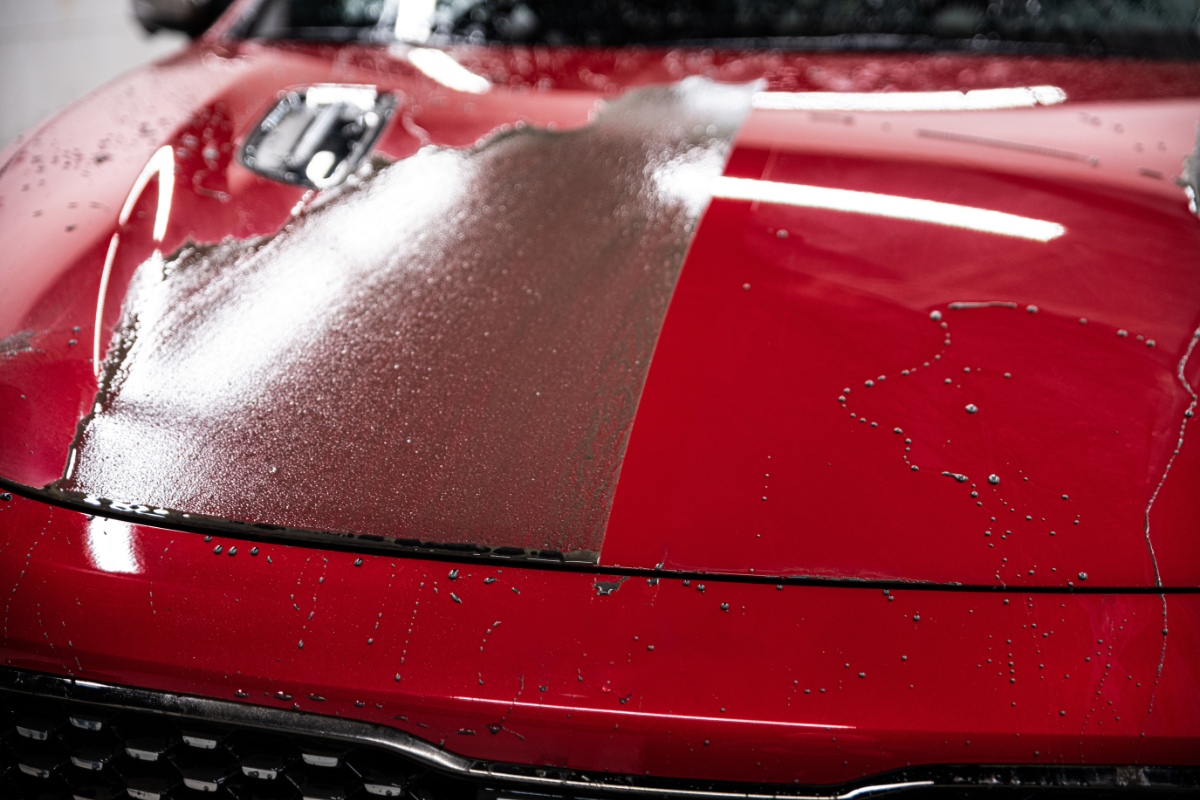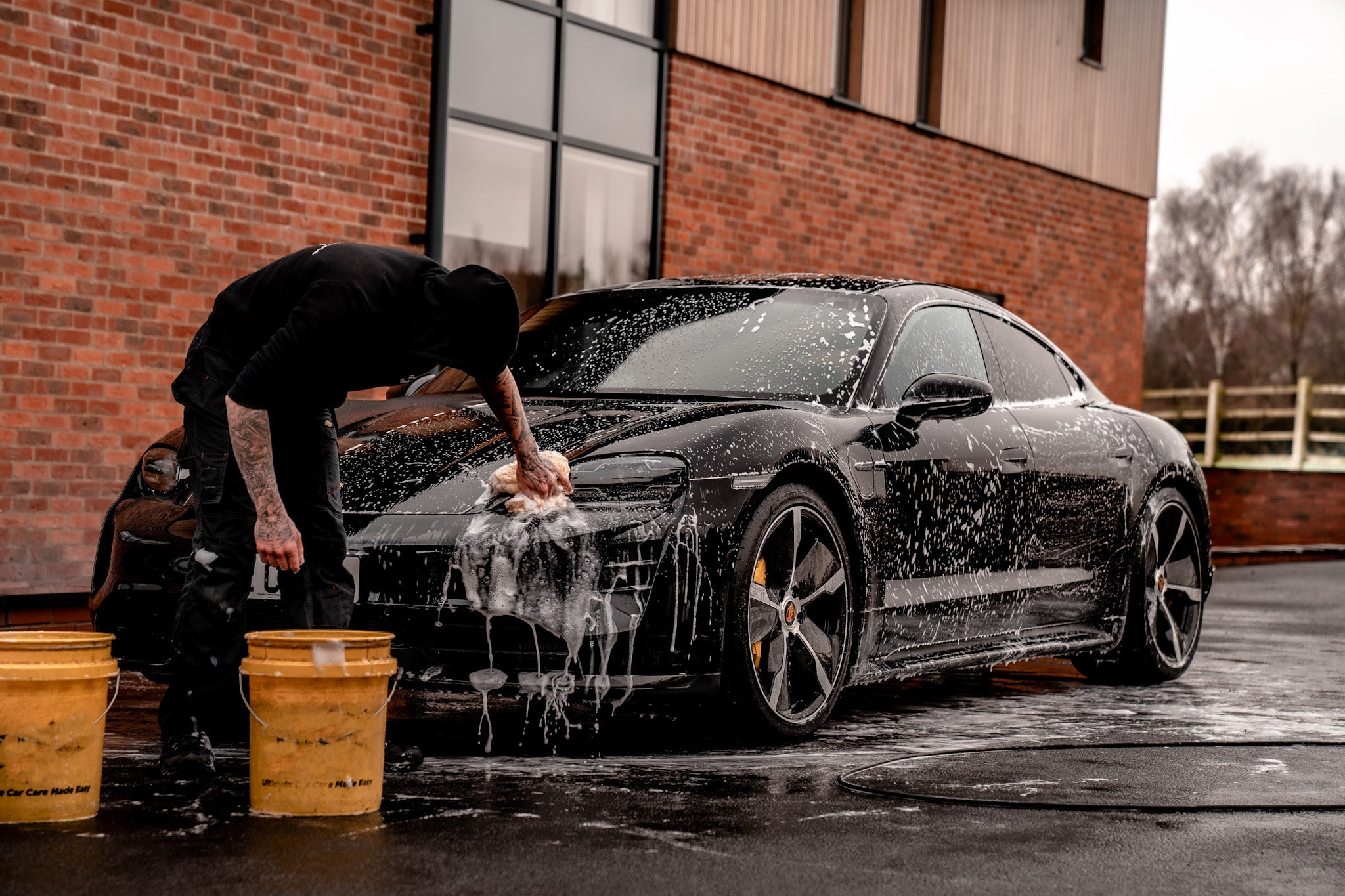A Comprehensive Overview to the Types of Ceramic Layer on the marketplace
Ceramic coatings have actually arised as an essential service throughout various sectors because of their unique residential or commercial properties and applications. From silica-based formulations recognized for their toughness to crossbreed choices that combine several benefits, the selections offered can be overwhelming. Recognizing the subtleties of each type, including their details advantages and ideal usage cases, is vital for making educated choices. As we explore the unique features and applications of these coatings, the effects for performance and durability become significantly noticeable, elevating concerns about which type might best fit your needs.
Recognizing Ceramic Coatings
Ceramic coverings are sophisticated safety remedies that have actually gained popularity in different markets, specifically in automobile and aerospace applications. These layers consist of a liquid polymer that, when healed, forms a resilient, hydrophobic layer externally of the substratum. This layer offers improved resistance to ecological impurities, UV radiation, and chemical exposure, thereby extending the life and visual allure of the underlying material.
The essential part of ceramic coatings is silica, which contributes to their hardness and longevity. The application procedure typically entails surface prep work, application of the layer, and treating, which can be attained through warm or UV light. As soon as cured, ceramic coverings exhibit phenomenal bonding properties, allowing them to stick highly to a variety of surface areas, including steels, plastics, and glass.
Along with their protective features, ceramic coatings additionally offer ease of maintenance. Their hydrophobic nature decreases the adherence of dirt and gunk, making cleaning easier and much less constant. On the whole, the adoption of ceramic coatings represents a significant development in surface security technology, offering both practical and visual benefits throughout several industries.
Kinds Of Ceramic Coatings
Different types of ceramic layers are available, each designed to meet particular efficiency requirements and applications - Auto Detailing. The most usual types include:
Silica-based Coatings: These finishes mainly contain silicon dioxide and are known for their sturdiness and chemical resistance. They are commonly made use of in vehicle and industrial applications.
Titanium Dioxide Coatings: Renowned for their photocatalytic residential properties, titanium dioxide coatings are frequently applied in environments where self-cleaning and antifungal homes are preferable, such as in structure materials and automotive coatings.
Zirconia Coatings: Identified by their high-temperature stability and thermal resistance, zirconia coverings are used in applications such as turbine engines and high-performance auto components.
Alumina Coatings: Showing excellent firmness and thermal stability, alumina finishes are regularly used in wear-resistant applications, including cutting devices and commercial machinery. - Paint Protection Film
Hybrid Coatings: Incorporating the residential properties of numerous materials, crossbreed coverings provide improved performance attributes, making them appropriate for special and requiring applications.
Each sort of ceramic covering offers unique objectives, permitting customers to select one of the most appropriate solution based on specific environmental problems and efficiency demands.
Benefits of Ceramic Coatings
Coatings play a crucial role in boosting the performance and durability of surfaces across various sectors. Ceramic layers, specifically, deal many advantages that make them progressively preferred among makers and customers alike. Among the primary benefits is their phenomenal sturdiness. These coatings are resistant to scrapes, chemicals, and UV rays, guaranteeing that the underlying surface area continues to be secured over time.
In addition to sturdiness, ceramic finishings offer superb hydrophobic buildings, permitting easy cleaning and maintenance. This water-repellent nature reduces the adherence of dust, crud, and other contaminants, which can prolong the visual charm and performance of the surface area. Moreover, ceramic finishings can significantly improve thermal resistance, making them optimal for applications that endure heats.

Application Process
When using ceramic layers, a thorough strategy is crucial to achieve optimal results. The application process generally begins with extensive surface area this preparation. This entails washing, decontaminating, and brightening the surface to get rid of all impurities, consisting of dust, grease, and prior waxes or sealers. A tidy surface area makes certain correct adhesion of the coating.
As soon as the surface area is prepped, the next action is to use the ceramic finishing. This i thought about this can be done utilizing an applicator pad or a microfiber fabric, ensuring even protection. It is critical to function in little sections to maintain control and avoid early healing. The finish must be applied in thin layers, as thicker applications can bring about irregular coatings.
After application, the finishing needs a specific curing time, commonly varying from a few hours to a full day, depending on the item. Complying with these steps vigilantly will make best use of the efficiency and longevity of the ceramic covering, giving a sturdy protective layer for the surface area.
Upkeep and Durability
To make sure the longevity and effectiveness of a ceramic coating, regular upkeep is necessary. Ceramic finishes, understood for their sturdiness and safety high qualities, require certain care regimens to maximize their life-span and performance. The initial step in maintenance entails routine washing with pH-neutral soap, staying clear of extreme chemicals that can degrade the finish. It is advisable to clean the vehicle on a regular basis, preferably every two weeks, to avoid the accumulation of impurities that could jeopardize the layer's integrity.
Along with regular washing, routine examinations are important. Look for signs of wear or damage, such as hydrophobic residential properties diminishing or surface blemishes. If required, a light gloss may be used to rejuvenate the finishing without removing it away.
In addition, the application of a booster spray can boost the coating's hydrophobic effects and restore its gloss. This is particularly advantageous for finishings that have actually been in usage for a prolonged duration. Inevitably, by sticking to these upkeep methods, one can dramatically expand the life of a ceramic layer, making certain that it proceeds to give optimum defense versus environmental elements and maintain the aesthetic allure of the lorry.
Verdict
